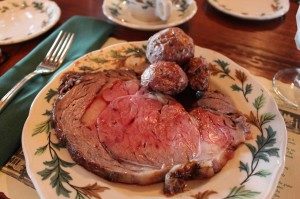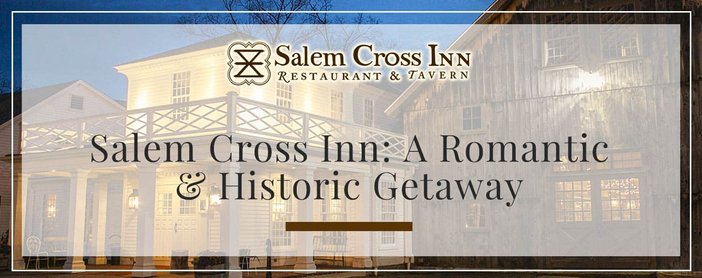How to Cook the Perfect Prime Rib
Prime rib is perhaps the king of beef, known for being a much sought after cut with an ability to feed multiple hungry dinner guests from its standing roast.
 Therefore, it is almost a requirement to cook this meat with finesse—only the perfect prime rib should be acceptable when it comes to this type of meat. When one considers the perfect prime rib, it should be moist with a deep shade of pink on the inside and a crisp yet flavorful exterior.
Therefore, it is almost a requirement to cook this meat with finesse—only the perfect prime rib should be acceptable when it comes to this type of meat. When one considers the perfect prime rib, it should be moist with a deep shade of pink on the inside and a crisp yet flavorful exterior.
How can one cook a perfect prime rib? The following article from Serious Eats outlines the science behind the perfect prime rib. With this guide, even an amateur should be able to attempt to cook the perfect prime rib with little trouble. Even better yet, this perfect prime rib can be cooked in a traditional oven, which is much easier to maintain than a grill or a roasting jack.
The Food Lab: How to Cook a Perfect Prime Rib
…
So what exactly is a Perfect Prime Rib anyway? Whether you buy prime or select, fresh or dry-aged, corn-stuffed or grass-fed, if you don’t cook it right, it ain’t going to be good. Here is my definition or perfection, in three commandments:
Commandment I: The Perfect Prime Rib must have a deep brown, crisp, crackly, salty crust on its exterior.
Commandment II: In the Perfect Prime Rib, the gradient at the interface between the brown crust and the perfectly medium-rare interior must be absolutely minimized (as in, I don’t want a layer of overcooked meat around the edges).
Commandment III: The Perfect Prime Rib must retain as many juices as possible.
Sub-Commandment i: The Perfect Prime Rib must be cookable without the use of heavy or specialized equipment, including propane or oxy-acetylene torches, sous-vide machines, or C-vap ovens.
Highs and Lows
Before I tried to start figuring out how to achieve all these goals simultaneously it was helpful to note that when cooking beef to medium-rare, there are really only two temperatures that matter.
- 125°F (or 51.7°C) is the temperature at which beef is medium rare—that is, hot but still pink, cooked but still moist and able to retain its juices. Any higher than that, and muscle fibers start to rapidly shrink, forcing flavorful juices out of the meat, and into the bottom of the roasting pan.
- 310°F (or 154.4°C) is the temperature at which the Maillard reaction—that wonderfully complicated process by which amino acids and reducing sugars recombine to form enticing roasty aromas—really begins to take off. At this range, meat qill quickly brown and crisp.
Ah—a dilemma revealed itself: In order to maximize browning I had to cook the meat in a sufficiently hot oven—I tried 400°F. At the same time, I didn’t want the interior to come up above 125°F.
Since a big beef roast cooks from the outside in, by the time the center had reached 125°F (that is, 120°F in the oven, followed by a 5°F rise in temperature after resting), sure there was a perfectly browned exterior, but the outermost layers had risen closer to around 165°F or 180°F, rendering them overcooked, gray, and dry, their juices having been squeezed out.
…
Taking what I learned from both the oven temperature testing and the searing testing into account, I now knew what I had to do to fulfill all three commandments: My goals should be to cook the interior of the roast as slowly as possible (IE, at as low a temperature as my oven could maintain), then sear it as quickly as possible (IE, at as high a heat as possible). Searing in a pan is not that practical for a joint bigger than a couple of ribs wide, so I needed a way to do this all in the oven.
While some recipes will have you simply pump up the oven temperature towards the end of cooking, this is sub-optimal. An oven can take 20 or 30 minutes to go from its lowest temperature to its highest temperature setting, during which time, once again, the outer layers of beef are busy overcooking.
But then, I thought, 20 to 30 minutes is exactly how long a rib roast needs to rest anyhow. What if I were to first cook it at a low temperature (200°F or lower), take it out of the oven, allow it to rest while I heated the oven to its highest temperature (500 to 550°F), then pop it back in just long enough to achieve a crust?
What I achieved was nothing less than Prime Rib Perfection:
Score:
Commandment I: Perfect Crust? Check.
Commandment II: No Gray Zone? Check.
Commandment III: Full-on Juiciness? Check.
As you can see, no gray overcooked meat, a crisp brown crust, and a rosy pink from center to edge.
But wait—there’s more!
The best part? I found that by cooking with this two stage method, I had a much larger window of time to serve the beef. Once I got past the initial low-temperature phase of cooking, so long as I kept the roast covered in foil, it would stay warm for over an hour. All I had to do was pop it back into its 550°F oven 8 minutes before my guests were ready to eat, and the roast would emerge hot, sizzling, and ready to carve, no need to rest it after the 500, since the only part that is being affected is the very exterior.
Family gatherings will never be the same. Now if only I could find a way to expose the rosy center under my sister’s crusty exterior, we’d really have something to celebrate at the holidays!
Get The Recipe!
Perfect Prime Rib with Red Wine Jus »
If you are still hesitant about attempting to cook your own perfect prime rib, you could always stop by the Salem Cross Inn in West Brookfield, MA. The perfect prime rib is the centerpiece for our Fireplace Feast, where we roast the rib on an authentic roasting jack. We also offer prime rib for various other special events, so please contact us to learn more.
Have you tasted one of Salem Cross Inn’s perfect prime rib dinners yet? What were your impressions?







